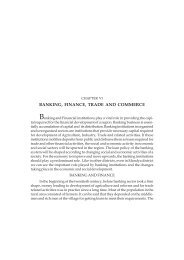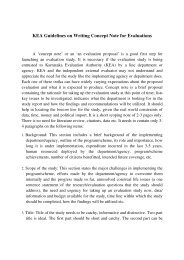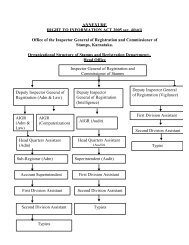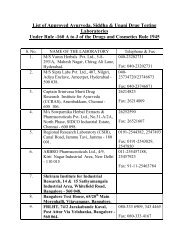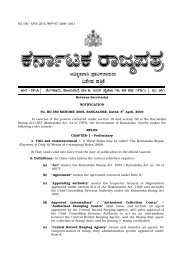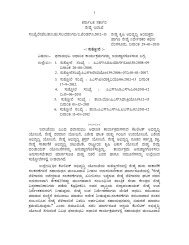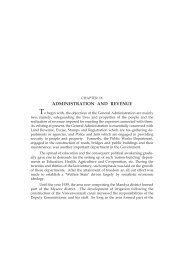Chapter XIII CULTURE - Government of Karnataka
Chapter XIII CULTURE - Government of Karnataka
Chapter XIII CULTURE - Government of Karnataka
You also want an ePaper? Increase the reach of your titles
YUMPU automatically turns print PDFs into web optimized ePapers that Google loves.
A Handbook <strong>of</strong> <strong>Karnataka</strong> 510<br />
<strong>of</strong> the drama was conveyed to the audience in prose which is dependent on the<br />
textual content <strong>of</strong> the songs.<br />
To an audience not conversant with the Kannada language, the range <strong>of</strong><br />
costumes and make-up seemed to capture the grandeur <strong>of</strong> a wonderland, which<br />
was ably supported by a rich musical background. In totality, Yakshagana<br />
theatre is one <strong>of</strong> the few rich theatre forms that has persisted even today.<br />
The ethical and religious background provided by temples have yielded to<br />
commercialism, bringing with it all the evils <strong>of</strong> popular entertainment.<br />
Towards the beginning <strong>of</strong> this century, there were a number <strong>of</strong> Yakshagana<br />
troupes, sponsored by prominent temples in Dakshina Kannada and Udupi.<br />
Saukur, Marnakatte, Mandarthi in the north, Mulki, Dharamasthala and<br />
Koodlu in the south are prominent among them. The temples concerned used<br />
to maintain them from their funds and some devotee <strong>of</strong> the temple used to<br />
pay for each performance which was free to the audience. There were quite a<br />
number <strong>of</strong> local patrons in the villages too. The plays were staged each night<br />
on special request. The actors and dancers who were orginally agriculurists,<br />
served in the plays more as service to the deity than as a pr<strong>of</strong>ession.<br />
From 1940’s things began to change very much in the institutional set up <strong>of</strong><br />
the troupes. Temples began to auction the rights <strong>of</strong> conducting the shows. By<br />
then, the influence <strong>of</strong> the commercial drama troupes had attracted people very<br />
much and Yakshagana artistes began to copy the stage costumes and slowly<br />
discard traditional dance. Another feature, namely, the running <strong>of</strong> the troupes<br />
on a commercial basis with tents and allowing spectators entry into the tent by<br />
selling tickets, began to gain ground; with this the total attitude <strong>of</strong> Yakshagana<br />
theatre changed.<br />
A Yakshagana Performance



